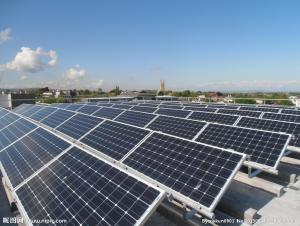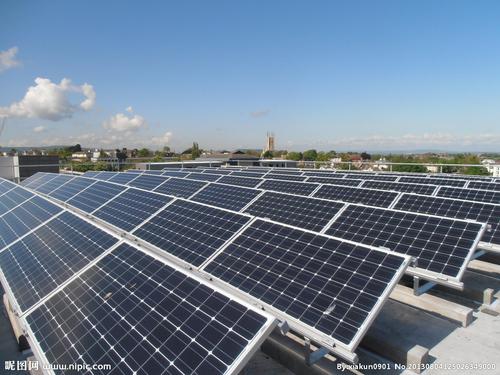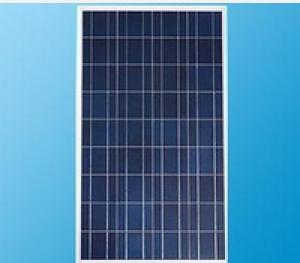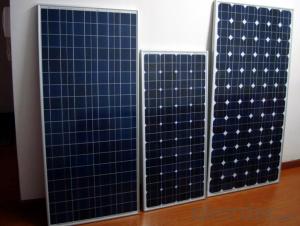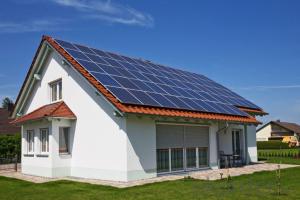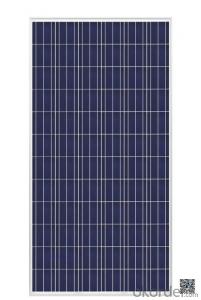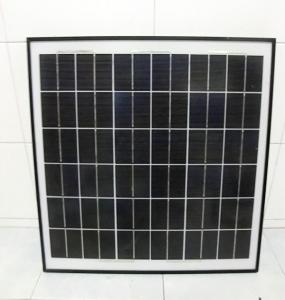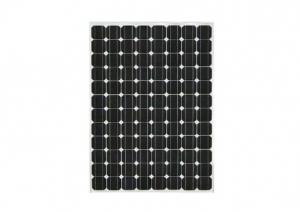Elecaenta Solar Panels - Solar Module Poly 250W
- Loading Port:
- China Main Port
- Payment Terms:
- TT OR LC
- Min Order Qty:
- -
- Supply Capability:
- -
OKorder Service Pledge
OKorder Financial Service
You Might Also Like
Solar Module
ABOUT YINGLI GREEN ENERGY
Yingli Green Energy Holding Company Limited (NYSE: YGE) is one of
the world’s largest fully vertically integrated PV manufacturers, which
markets its products under the brand “Yingli Solar“. With over 7.0GW
of modules installed globally, we are a leading solar energy company
built upon proven product reliability and sustainable performance. We
are the fi rst renewable energy company and the fi rst Chinese company
to sponsor the FIFA World CupTM.
PERFORMANCE
- High effi ciency, multicrystalline silicon solar cells with high transmission
and textured glass deliver a module effi ciency of up to 16.0%,
minimizing installation costs and maximizing the kWh output of your
system per unit area.
- Tight positive power tolerance of 0W to +5W ensures you receive
modules at or above nameplate power and contributes to minimizing
module mismatch losses leading to improved system yield.
- Top ranking in the “TÜV Rheinland Energy Yield Test” and the
“PHOTON Test” demonstrates high performance and annual energy
production.
RELIABILITY
- Tests by independent laboratories prove that Yingli Solar modules:
Fully conform to certifi cation and regulatory standards.
Withstand wind loads of up to 2.4kPa and snow loads of up to
5.4kPa, confi rming mechanical stability.
Successfully endure ammonia and salt-mist exposure at the highest
severity level, ensuring their performance in adverse conditions.
- Manufacturing facility certifi ed by TÜV Rheinland to ISO 9001:2008,
ISO 14001:2004 and BS OHSAS 18001:2007.
WARRANTIES
- 10-year limited product warranty1.
- Limited power warranty1: 10 years at 91.2% of the minimal rated power
output, 25 years at 80.7% of the minimal rated power output.
1In compliance with our Warranty Terms and Conditions.
QUALIFICATIONS & CERTIFICATES
IEC 61215, IEC 61730, MCS, CE, ISO 9001:2008, ISO 14001:2004, BS OHSAS
18001:2007, PV Cycle, SA 8000
ELECTRICAL PERFORMANCE
Electrical parameters at Standard Test Conditions (STC)
Module type YLxxxP-29b (xxx=Pmax)
Power output Pmax W 260 255 250 245 240
Power output tolerances ΔPmax W 0 / + 5
Module effi ciency ηm % 16.0 15.7 15.4 15.1 14.8
Voltage at Pmax Vmpp V 30.3 30.0 29.8 29.6 29.3
Current at Pmax Impp A 8.59 8.49 8.39 8.28 8.18
Open-circuit voltage Voc V 37.7 37.7 37.6 37.5 37.5
Short-circuit current Isc A 9.09 9.01 8.92 8.83 8.75
Electrical parameters at Nominal Operating Cell Temperature (NOCT)
Power output Pmax W 189.7 186.0 182.4 178.7 175.1
Voltage at Pmax Vmpp V 27.6 27.4 27.2 27.0 26.8
Current at Pmax Impp A 6.87 6.79 6.71 6.62 6.54
Open-circuit voltage Voc V 34.8 34.8 34.7 34.6 34.6
Short-circuit current Isc A 7.35 7.28 7.21 7.14 7.07
STC: 1000W/m2 irradiance, 25°C cell temperature, AM1.5g spectrum according to EN 60904-3.
Average relative effi ciency reduction of 3.3% at 200W/m2 according to EN 60904-1.
NOCT: open-circuit module operation temperature at 800W/m2 irradiance, 20°C ambient temperature, 1m/s wind speed.
OPERATING CONDITIONS
Max. system voltage 1000VDC
Max. series fuse rating 15A
Limiting reverse current 15A
Operating temperature range -40°C to 85°C
Max. static load, front (e.g., snow) 5400Pa
Max. static load, back (e.g., wind) 2400Pa
Max. hailstone impact (diameter / velocity) 25mm / 23m/s
CONSTRUCTION MATERIALS
Front cover (material / thickness) low-iron tempered glass / 3.2mm
Cell (quantity / material / dimensions /
number of busbars)
60 / multicrystalline silicon / 156mm x 156mm / 2 or 3
Encapsulant (material) ethylene vinyl acetate (EVA)
Frame (material / color / anodization color /
edge sealing) anodized aluminum alloy / silver / clear / silicone or tape
Junction box (protection degree) ≥ IP65
Cable (length / cross-sectional area) 1000mm / 4mm2
Plug connector
(type / protection degree) MC4 / IP67 or YT08-1 / IP67 or Amphenol H4 / IP68
PACKAGING SPECIFICATIONS
Number of modules per pallet 29
Number of pallets per 40' container 28
Packaging box dimensions
(L / W / H) 1700mm / 1135mm / 1165mm
Box weight 568kg
Unit: mm
• Due to continuous innovation, research and product improvement, the specifi cations in this product information sheet are subject to change
without prior notice. The specifi cations may deviate slightly and are not guaranteed.
• The data do not refer to a single module and they are not part of the offer, they only serve for comparison to different module types
- Q: I have two solar panels that were going to be trashed at work. I want to use them to charge batteries on my RV but i noticed they put out around 20 volts in direct sunlight. So i am wondering: -isn't this way too much voltage for a 2 volt system? -do a need some sort of a regulator connected to keep them from overcharging?
- You can use them without the regulator . Just make sure you use blocking diodes so the the power does not flow back into the panels . You can get those at radio shack of some electronic store or off OKorder for a few bucks .
- Q: I know what they do and how they work, but at this point they're expensive, don't always produce enough electricity as needed, and can't be used when there's no sun, as in half the day. Wouldn't wind power seem so more efficient? Or if they do use solar panels, how about putting them in the desert. But I really believe that research money should go to fusion generators since that's the future and the answer to our problems. Which is best in your opinion?
- It absolutly depends on where you live. I don't have enough wind in my area for a wind turbine to do any good. I just installed solar, the system will pay for itself in about 6 years. I didn't get a system that will zero out my electcity usage, but it will dramatically be decreased. I can always add to it in a few years. Since I plan on living here forever I will see a great financial benift.
- Q: I want to buy a solar panel kit to run my central AC unit. it is a 3 ton unit. Can I do this? The electric rates in the Chicago area are skyrocketing and I can't keep paying 350 dollar electric bills during the spring and summer months
- It sounds like saving money is your chief goal. If your house is not already super-insulated, that should be the first target. Super-insulation, radiant barriers, double-pane windows, white roof, weatherstripping, attic fan. Number two would be conservation. Can you turn the A/C up to 80? I visited a place in Wyoming when it was 0 outside, and 80 felt very pleasant. Third, efficiency. Have you considered a ground-sourced heat pump? Deep down below your house the water table may be colder than 40 degrees F, and can provide good cooling. After all that, you can look into solar electric, which may or may not be a good deal in your area. The type of solar electric that is most cost efficient is the kind that connects right to the house wiring and works alongside the normal electric company. You can talk with a local installer and get a free financial analysis. Then you can look at it and see if the installer is on the level, or trying to play accounting tricks with unreasonable assumptions. Solar makes sense in most parts of California, but Illinois is not known as a big solar area. The kits you have have seen were probably for standalone solar, generally an expensive proposition for the amount of power you get. Put another way, either it will be low power, or it will be very expensive.
- Q: My electric bill per month averages 800 kWh per month. I am looking at 65W solar panels. How many panels would I need to make my bill come to zero? I realize I also need an inverter to convert dc to ac.
- I like TBS0's answer, but 5KW isn't going to hack it. We don't live life on the average. If you turn on the oven, the dryer, the iron, a bunch of lights, and the TV, you are going to shut the system right down. You should not count on running everything with solar cells, but the most critical circuits. And you are lucky to have 25% of a day in optimum solar alignment for photocells. You need to think outside the Al Gore crazy box. Our modern way of life requires a lot of power! If you switched to coal or wood for cooking and heating and ironing, sunshine for drying clothes, heating the hot water heater, and for daytime lighting, then you could use the photocells for some lighting and the washing machine and anything electronic. You might stand a chance.
- Q: cheapest price for a 20 watt solar panel sold on line
- If okorder /... , cost $75 each. I haven't personally tried that product, but the company has been around for a long time, and is not a fly-by-night. If it has to last, there are dozens of places online that will sell conventional sealed panels. Expect to pay $2.00 a watt on up nowadays.
- Q: What are the supplies needed in a solar panel field, i know there are the panels. But what about batteries, and converters. Possibly other things, and how many will i need, for a certain amount of panels?
- There okorder . I think you can find lots of info on the internet. I hope this helps you get going.
- Q: I am planning to run a couple of dc motors on solar current. I have a couple of 450mA 4V, 200mA .5V, 00mA 9V solar panels with me. I need to run a pair of .5A 9V motors. Suggest me a circuit along with other equipments I might require. For your info, I am trying to build a solar powered drone / UAV
- I don't think it is enough solar power. Your motor requires .5A x 9V = 3.5 watts. The solar cells are .450A x 4V x 2ea. = 3.6 watts, .2A x .5V = .3 watts, .A x 9V = .9 watts total solar = 4.8 watts. The problem with connecting the cells in series to get the right voltage, like the two 4V cells in series with the .5 volt cell (total 9.5 volts) is that the .5 volt cell limits the maximum current to only 0.2A. If you paralleled that with the 9V cell, you would get 9 volts at 0.2 + 0. = 0.3A, too low to operate the motor at its design current and voltage. The best you could do is put the two 4V cells in series, and in parallel with the 9V cell (a blocking diode might be a good idea, but probably not required for such a small array). That way you get 8 volts at 0.55 amps.
- Q: Can solar panels be installed on a school or educational institution?
- Yes, solar panels can be installed on a school or educational institution. In fact, many educational institutions are now adopting solar energy as a sustainable and cost-effective solution to meet their electricity needs. Installing solar panels not only reduces carbon footprint and saves on energy costs but also provides an opportunity for students to learn about renewable energy and sustainable practices.
- Q: Home depot has solar panels but they are so expensive? were is the best place to get them?
- You okorder (or any other website you can find in a search engine) to get a list in your area. Good luck!
- Q: How do solar panels affect the property's carbon footprint?
- Solar panels can greatly reduce a property's carbon footprint by generating clean and renewable energy. Since solar panels generate electricity by harnessing the power of the sun, they do not emit any greenhouse gases or pollutants during operation. By reducing reliance on fossil fuels and grid electricity, solar panels help to offset carbon emissions that would have been produced by traditional energy sources, thus positively impacting the property's carbon footprint.
Send your message to us
Elecaenta Solar Panels - Solar Module Poly 250W
- Loading Port:
- China Main Port
- Payment Terms:
- TT OR LC
- Min Order Qty:
- -
- Supply Capability:
- -
OKorder Service Pledge
OKorder Financial Service
Similar products
Hot products
Hot Searches
Related keywords
